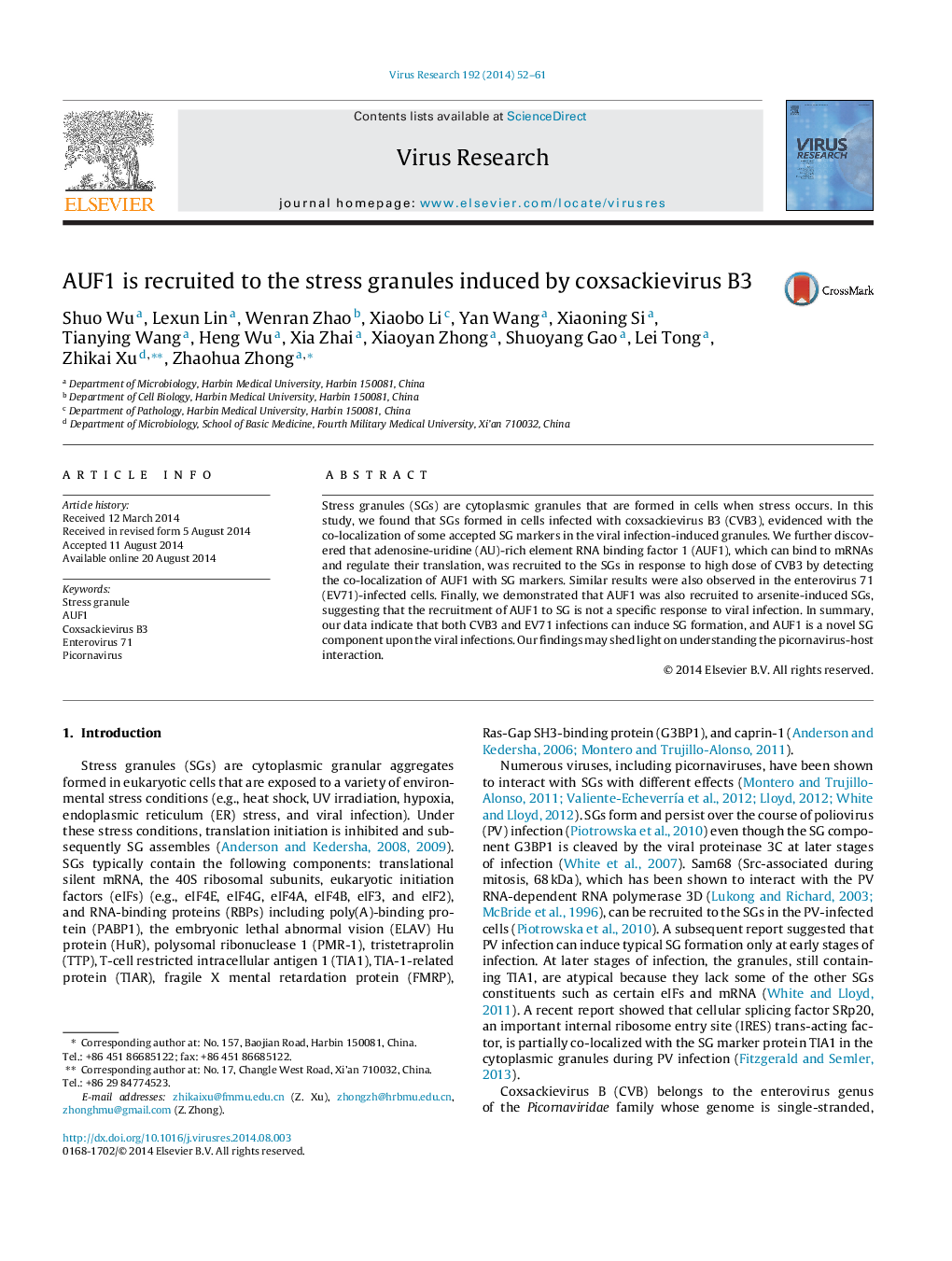| Article ID | Journal | Published Year | Pages | File Type |
|---|---|---|---|---|
| 3428396 | Virus Research | 2014 | 10 Pages |
•CVB3 infection can induce SG formation.•AUF1 is recruited to SGs in cells infected with high dose of CVB3.•EV71 infection also induces SG formation and AUF1 is recruited to the SGs.•The results provide a clue to probe a role of SG during picornavirus infections.
Stress granules (SGs) are cytoplasmic granules that are formed in cells when stress occurs. In this study, we found that SGs formed in cells infected with coxsackievirus B3 (CVB3), evidenced with the co-localization of some accepted SG markers in the viral infection-induced granules. We further discovered that adenosine-uridine (AU)-rich element RNA binding factor 1 (AUF1), which can bind to mRNAs and regulate their translation, was recruited to the SGs in response to high dose of CVB3 by detecting the co-localization of AUF1 with SG markers. Similar results were also observed in the enterovirus 71 (EV71)-infected cells. Finally, we demonstrated that AUF1 was also recruited to arsenite-induced SGs, suggesting that the recruitment of AUF1 to SG is not a specific response to viral infection. In summary, our data indicate that both CVB3 and EV71 infections can induce SG formation, and AUF1 is a novel SG component upon the viral infections. Our findings may shed light on understanding the picornavirus-host interaction.
